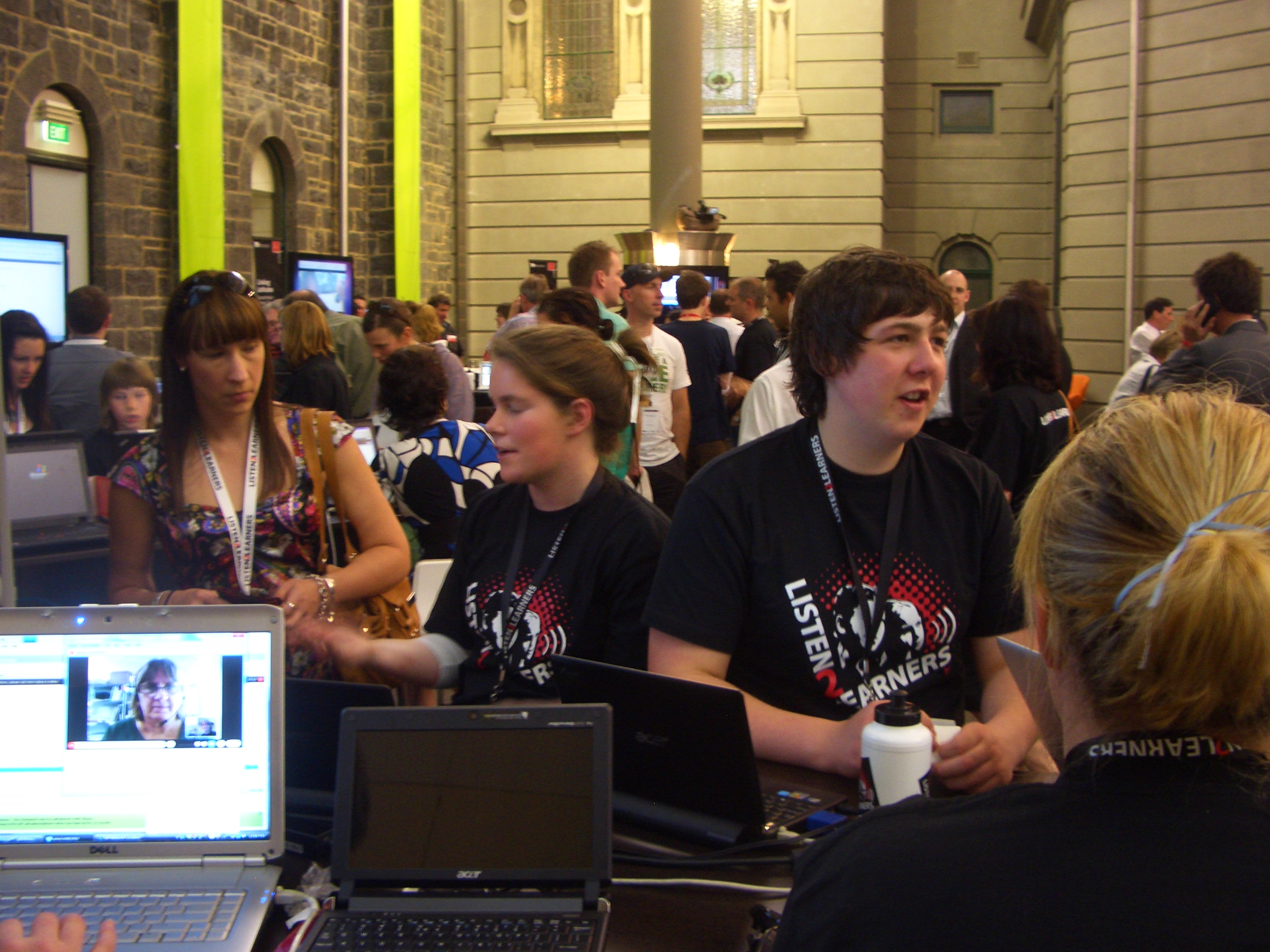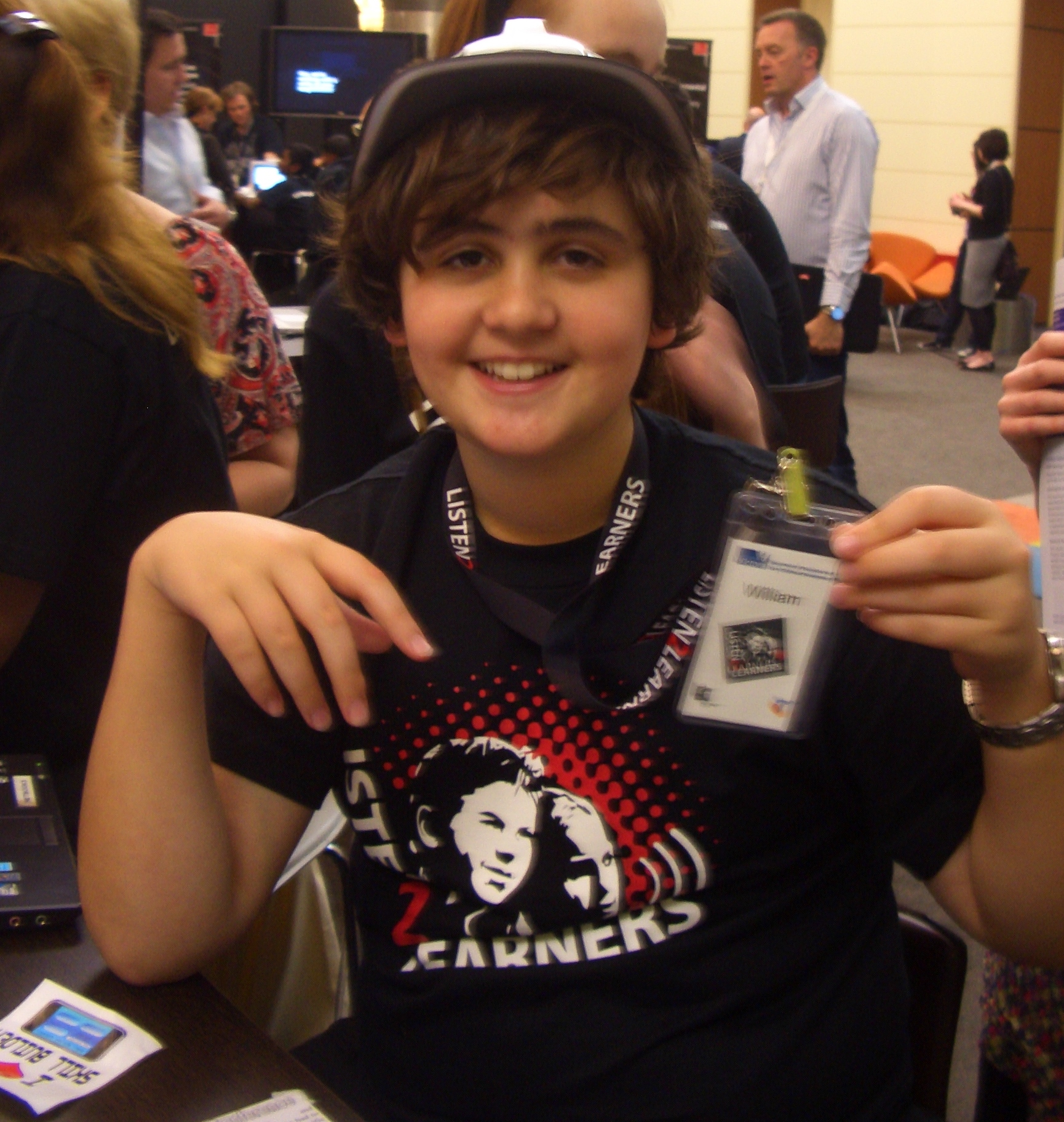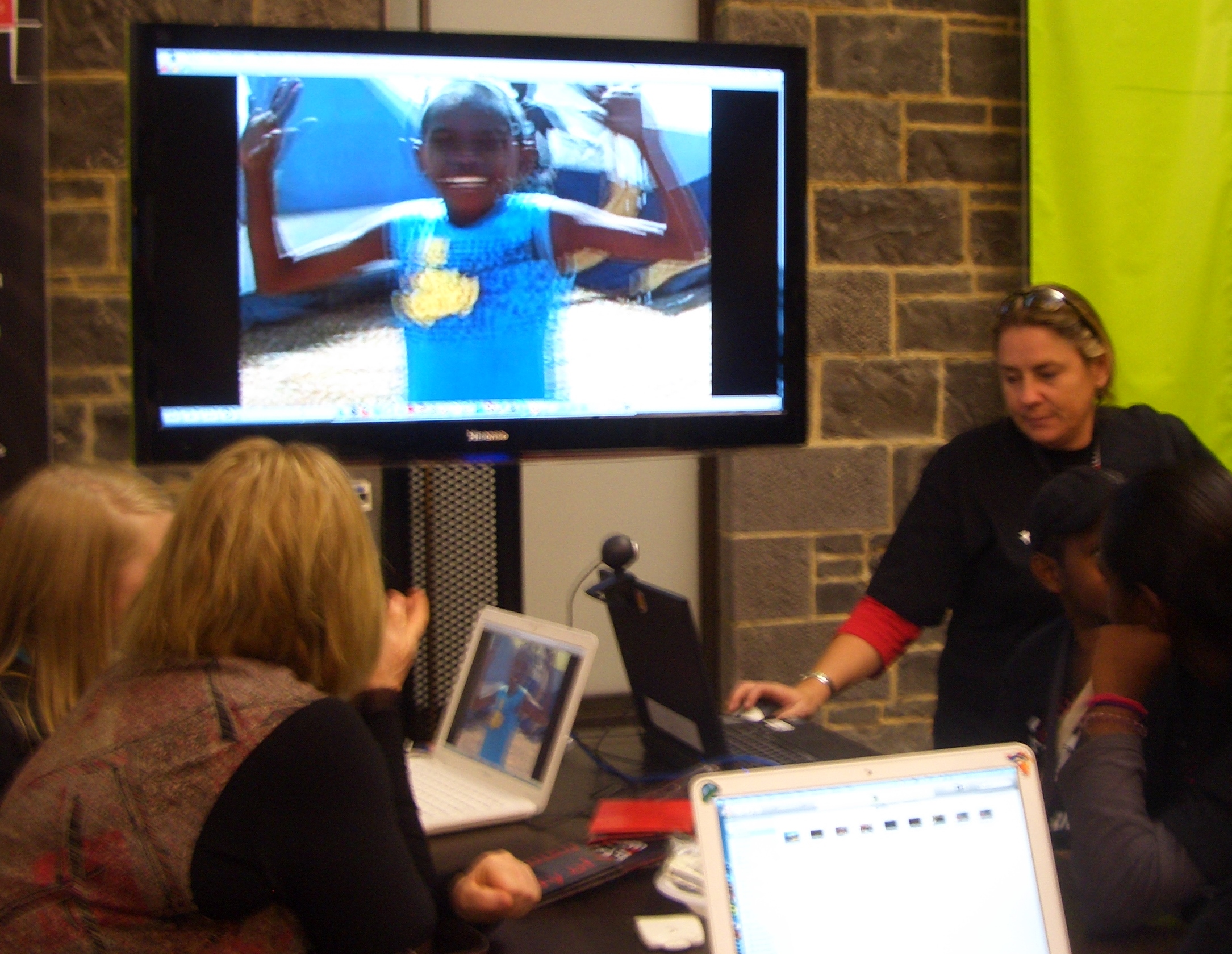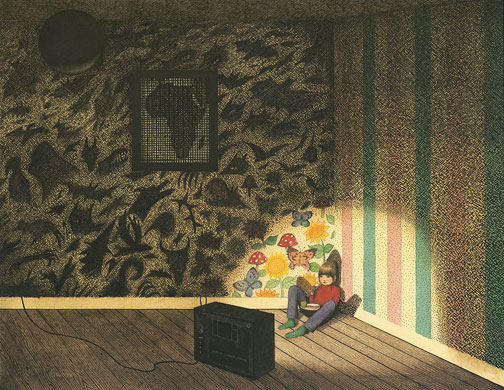
Picture by Anthony Browne
The New York Times article Picture books no longer a staple for children (7 Oct 2010) claims that
Picture books are so unpopular these days at the Children’s Book Shop in Brookline, Mass., that employees there are used to placing new copies on the shelves, watching them languish and then returning them to the publisher.
Apparently,
publishers have scaled back the number of titles they have released in the last several years, and booksellers across the country say sales have been suffering.
Now here’s the disturbing part:
Parents have begun pressing their kindergartners and first graders to leave the picture book behind and move on to more text-heavy chapter books. Publishers cite pressures from parents who are mindful of increasingly rigorous standardized testing in schools.
Okay, I’m not at all qualified to comment about the situation in New York, but the pressure on children to move ahead to ‘serious reading’ so that they make a head start on the journey towards the results-heavy secondary school education certainly rings a bell – an alarm bell.
Firstly, I am aware of the pressure on parents of very young children to start securing their future at a very early age. Even in preschool and child minding centres there is an educational program which is taken very seriously. Even when my boys were very young, I couldn’t help feeling nervous when we were missing out on a program which might retard their development in this or that area. Oh no, should they also take tennis lessons, but what about judo? And in primary school – should I be taking them to Kumon maths? Is one instrument enough?
By secondary school this view of the educational journey is even more entrenched, especially with the dreaded year 12 result looming at the end.
It’s a terrible pressure parents are feeling — that somehow, I shouldn’t let my child have this picture book because she won’t get into Harvard.”
Big mistake!
Focusing on test results, stanines, scores and the such devalue a real focus on learning and the joy of learning. Naturally parents want their children to find successful careers, and so doing well in school is usually a matter of doing your homework, learning content and fulfilling prescriptive guidelines.
Picture books have traditionally been associated with very young children. Parents read picture books to their children before they start school, and teachers read them to children in the early primary years – or even throughout primary school – but once a child starts ‘chapter books’, everyone feels very proud. It’s a milestone. I remember in grade 3 we had to stop reading aloud and read silently because this was part of our ‘growing up’. Pictures then fall away, as if they somehow hold children back.
But this is faulty thinking.
Literacy experts are quick to say that picture books are not for dummies. Publishers praise the picture book for the particular way it can develop a child’s critical thinking skills.
“To some degree, picture books force an analog way of thinking,” said Karen Lotz, the publisher of Candlewick Press in Somerville, Mass. “From picture to picture, as the reader interacts with the book, their imagination is filling in the missing themes.”
Many parents overlook the fact that chapter books, even though they have more text, full paragraphs and fewer pictures, are not necessarily more complex.
I absolutely agree. With limited text on each page, the words in picture books are very carefully chosen, often lyrical, or employing alliteration, assonance or onomatopeia. In a good picture book, the sequence of pictures in developing the story is tight. And finally, there is much more to read on the page than just the words – children learn to read visual clues and make inferences. Overall, there is a special skill in reading a good picture book.
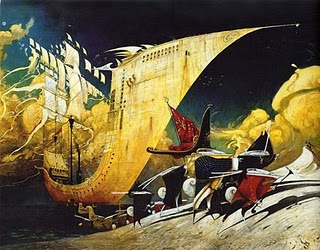
In today’s media-rich world, students are less text-centric. They have YouTube at their fingertips, and spend a lot of time watching videos. Animated series such as The Simpsons, American Dad and South Park are not aimed at young children although young children do watch them.
Comics have become acceptable and popular reading material whereas they used to be regarded as B-grade literature. Graphic novels have evolved, confusing those who are unable to see how they are different to comics. Are they different to comics?

Shaun Tan is one example of a picture book author who has pushed the boundaries of the genre. His picture books are so sophistocated that they could easily be studied in senior years. More importantly, there are so many layers of interpretation to uncover, and that is the beauty of images. There is so much to observe and discuss. Visual literacy, making sense of picture clues, critical thinking are all important skills these days.
I’m actually surprised by the New York Times article. My observation is that picture books are still valued. In any case, secondary school teacher librarians in Australia take them very seriously on the whole. Teachers use them with older students. I don’t know anything about book shop sales, but I do know that the picture book areas are attractive and popular with parents and children. In my school, a boys’ secondary college, the graphic novel section is the most popular reading area during recess and lunchtimes.
Picture books are an important genre and I hope they are here to stay.
The digitization of text has been a topic of increasing cultural concern in recent year and may often feel like fighting windmills as some of humanity’s greatest literary artifacts crumble under the unforgiving effects of time, tucked away in the world’s disjointed libraries. Now, Biblioteca Nacional de España, The National Library of Spain, offers an ambitious vision for what the afterlife of dying books could hold. Quijote Interactivo is an impressive interactive digitization of the original edition of Miguel de Cervantes’ cult 1605-1615 novel, Don Quixote. Though the site is entirely in Spanish, the sleek interface, rich multimedia galleries and charmingly appropriate sound design make it a joy to explore whatever your linguistic nativity.




